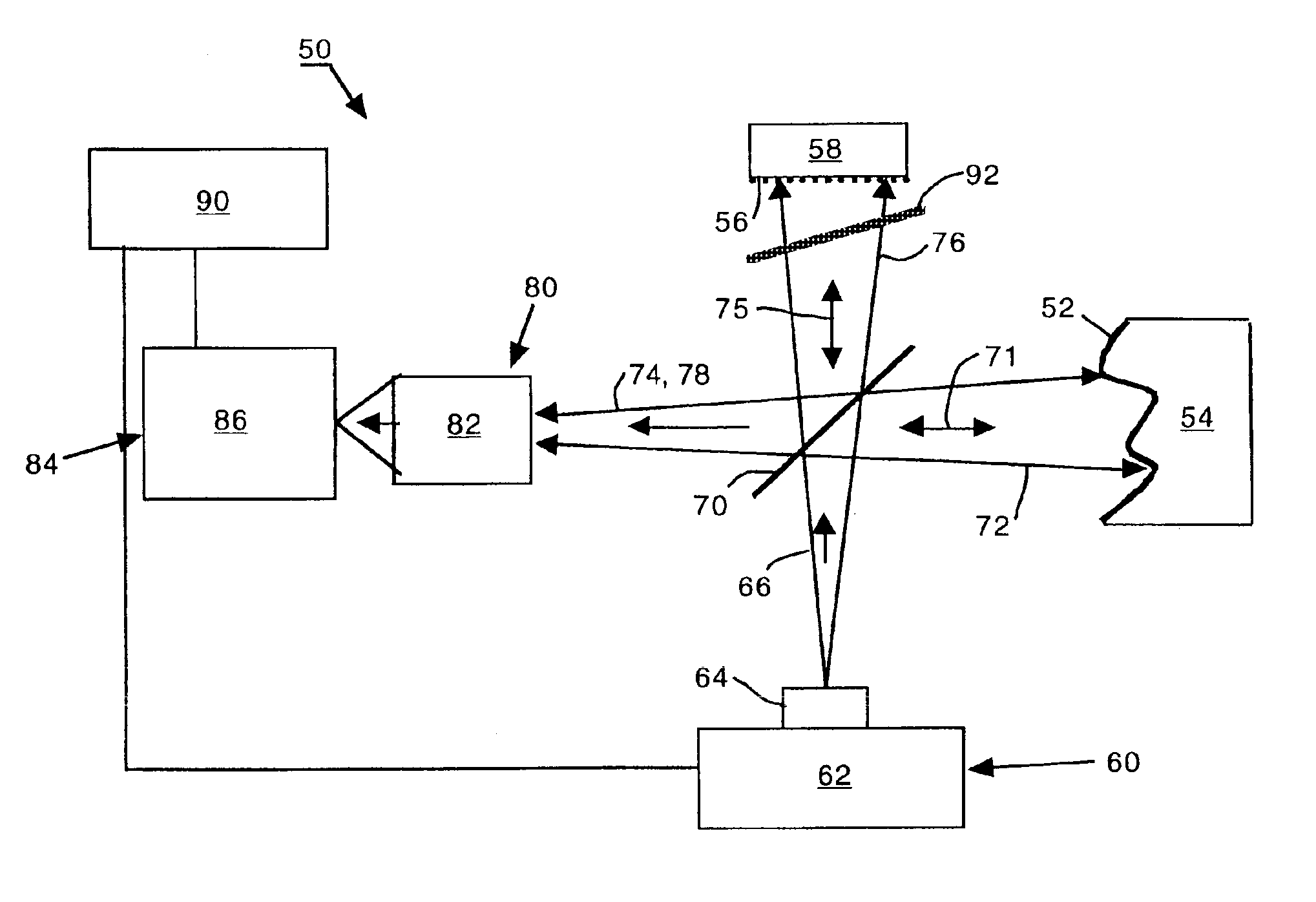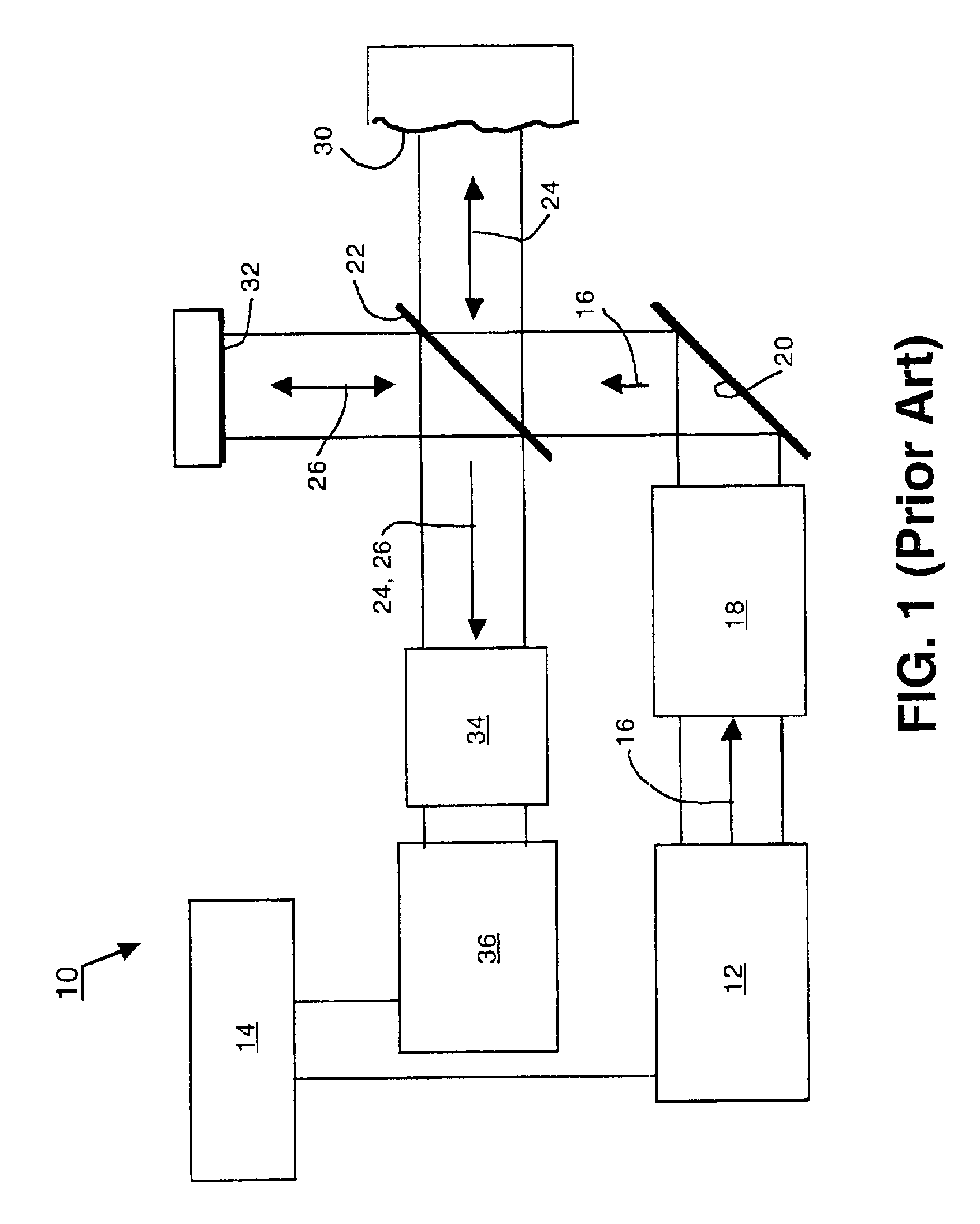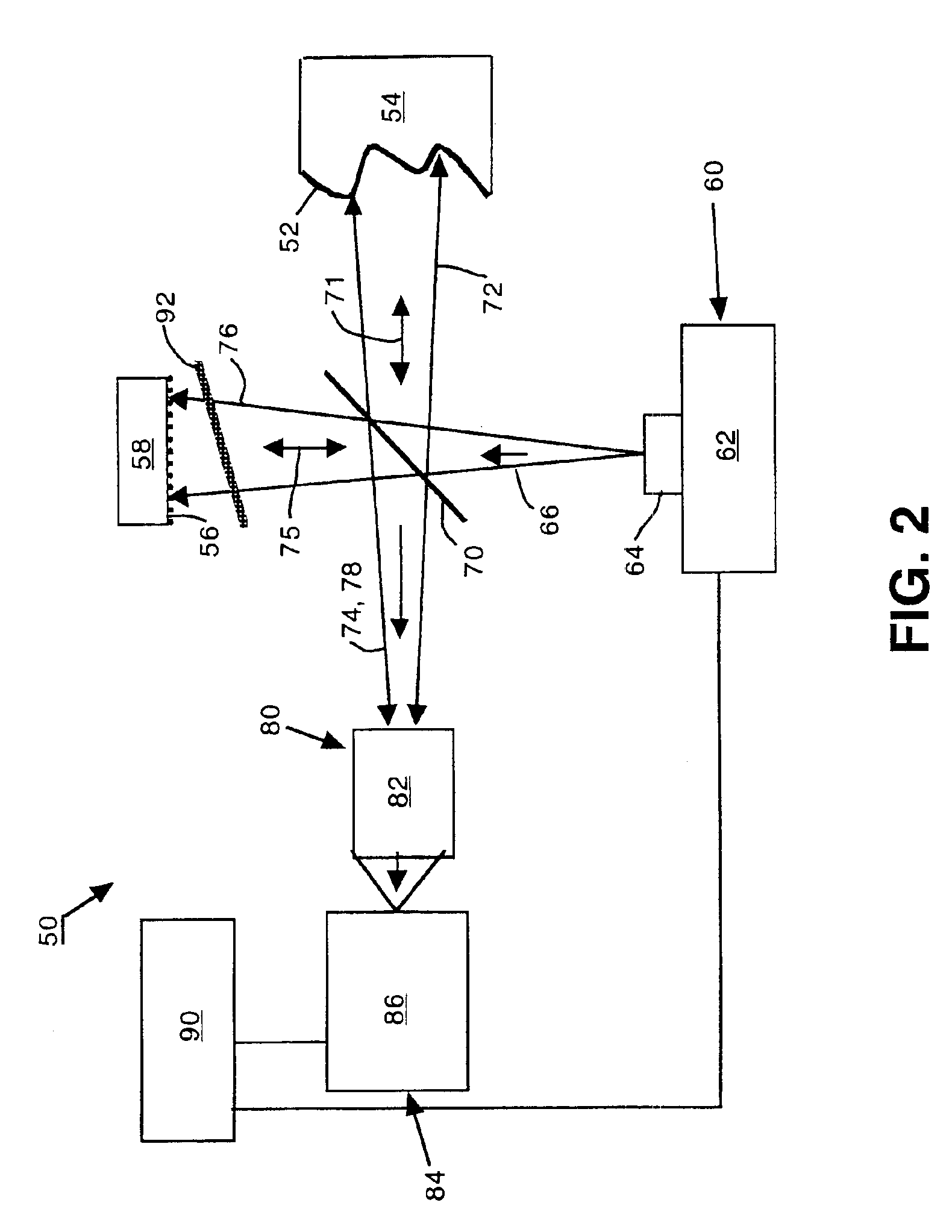Frequency-scanning interferometer with non-specular reference surface
a frequency-scanning interferometer and reference surface technology, applied in the direction of instruments, measurement devices, using optical means, etc., can solve the problems of reducing the accuracy of measurement step sizes, reducing the cost and complexity of frequency-scanning interferometers, and reducing aperture dimensions
- Summary
- Abstract
- Description
- Claims
- Application Information
AI Technical Summary
Benefits of technology
Problems solved by technology
Method used
Image
Examples
Embodiment Construction
[0042]An embodiment of the invention as a modified frequency-scanning interferometer 50 arranged for measuring a diffuse object surface 52 is shown in FIG. 2. The frequency-scanning interferometer 50 is configured generally as a Twyman-Green interferometer, but other known interferometer configurations could also be used. However, unlike conventional Twyman-Green interferometers, no collimating optics are employed and a reference surface 56 is arranged as a non-specular or diffuse surface.
[0043]A radiation source 62 associated with an illuminating system 60 produces an expanding measuring beam 66. Beam conditioning optics 64 control expansion of the measuring beam 66 to fill corresponding aperture dimensions of the object surface 52 and the reference surface 56. Preferably, the radiation source 62 is a point source of coherent radiation, such as a diode laser (e.g., a GaAs-based laser), tunable through a limited range of frequencies (or wavelengths). The expanding measuring beam 66 ...
PUM
 Login to View More
Login to View More Abstract
Description
Claims
Application Information
 Login to View More
Login to View More - R&D
- Intellectual Property
- Life Sciences
- Materials
- Tech Scout
- Unparalleled Data Quality
- Higher Quality Content
- 60% Fewer Hallucinations
Browse by: Latest US Patents, China's latest patents, Technical Efficacy Thesaurus, Application Domain, Technology Topic, Popular Technical Reports.
© 2025 PatSnap. All rights reserved.Legal|Privacy policy|Modern Slavery Act Transparency Statement|Sitemap|About US| Contact US: help@patsnap.com



